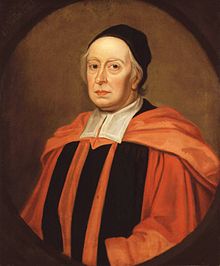Introduction

Kent is a county in the South East England region, the closest county to continental Europe. It borders Essex across the entire estuary of the River Thames to the north; the French department of Pas-de-Calais across the Strait of Dover to the south-east; East Sussex to the south-west; Surrey to the west and Greater London to the north-west. The county town is Maidstone.
It is the fifth most populous county in England, the most populous non-metropolitan county and the most populous of the Home Counties, an area influenced by the capital such as commutes and transport connections to the capital. Twenty-eight per cent of the county forms part of two Areas of Outstanding Natural Beauty: the North Downs and The High Weald. (Full article...)
Selected article
Wormshill (/wɜːrmzˈhɪl/ wurmz-HIL), historically Wormsell, is a small village and civil parish within the Borough of Maidstone, Kent, England. The parish is approximately 7 miles (11 km) south of the Swale and 8 mi (13 km) east of Maidstone. The village of Frinsted lies 0.6 mi (1 km) to the east and Bicknor 1+1⁄2 mi (2.4 km) to the north-west; while Hollingbourne is 3 mi (5 km) to the south-west. The village lies on an exposed high point of the North Downs, within the Kent Downs Area of Outstanding Natural Beauty.
Archaeological and toponymic evidence of Wormshill's existence predates its appearance in the Domesday Book of 1086. The village contains a number of heritage-listed buildings, which include a Norman church, a public house and one of the oldest surviving post office buildings in the United Kingdom. The fields and woodland surrounding Wormshill have changed little in the past 500 years, and the village itself remains rural with a low population density compared to the national average. The population of 200 is a mixture of agricultural workers employed by local farms, and professional residents who commute to nearby towns. (Full article...)
Selected images
Selected biography

John Wallis (/ˈwɒlɪs/; Latin: Wallisius; 3 December [O.S. 23 November] 1616 – 8 November [O.S. 28 October] 1703) was an English clergyman and mathematician, who is given partial credit for the development of infinitesimal calculus.
Between 1643 and 1689 he served as chief cryptographer for Parliament and, later, the royal court. He is credited with introducing the symbol ∞ to represent the concept of infinity. He similarly used 1/∞ for an infinitesimal. John Wallis was a contemporary of Newton and one of the greatest intellectuals of the early renaissance of mathematics. (Full article...)
Things you can do
Nominate:

Join the WikiProject Kent: Any help on the Kent project would be gratefully received, even if only on your local area of expertise. FAQ about editing Ask the project a question here

Tasks: Here are some Kent related tasks you can do:
- Clean up an article: Here are automatically generated lists of articles needing cleanup sorted alphabetically and by category.
- Edit the Top and High importance articles.
- Refine/polish: Ashford, Royal Tunbridge Wells, Canterbury
- Expand:: List of churches in Kent, Maidstone Borough Council
- NPOV: K College
- Citation needed: Unreferenced Kent articles
- Cleanup/Copyedit: Kingdom of Kent
- Expert attention: Channel Tunnel, Bromley Civic Society
- Stubs: see Kent geography stubs articles
Note: These articles may overlap with those on other related lists. If you would like to make a change, either do so yourself, or make a suggestion.
Districts in Kent
Kent is divided into 12 local authority districts and Medway Unitary Authority.
Did you know...

- ... that the present town of Ashford in Kent, England, originates from an original settlement established in 893 AD by inhabitants escaping a Danish Viking raid?
- ...that Charles Davis Lucas, the first person to be awarded the Victoria Cross, is buried in the churchyard of St Lawrence's Church in Mereworth, Kent?
- ...that the village of Chiddingstone near Sevenoaks is unique in that with the exception of church and castle it is entirely owned by the National Trust?
- ...that Matthew Webb, the very first person to swim the English Channel, left from Dover in 1875 ?
- ... that the world’s first aircraft factory was opened at Eastchurch on the Isle of Sheppey by the Short Brothers in 1909?
- ... that there were 36 Kings of Kent?
- ... that Herne Bay Pier was the setting for the opening sequence of Ken Russell's first feature film French Dressing?"
The County
At the time of the 1831 census, Kent was the 10th largest county, covering 972,240 acres (3,934.5 km2), however by 1871 it had grown to 995,344 acres (4,028.01 km2) and became the 9th largest.
WikiProjects
Related portals
Associated Wikimedia
The following Wikimedia Foundation sister projects provide more on this subject:
-
Commons
Free media repository -
Wikibooks
Free textbooks and manuals -
Wikidata
Free knowledge base -
Wikinews
Free-content news -
Wikiquote
Collection of quotations -
Wikisource
Free-content library -
Wikiversity
Free learning tools -
Wikivoyage
Free travel guide -
Wiktionary
Dictionary and thesaurus
















![Image 16 Credit: Michael Wilmore The Kent & East Sussex Railway was opened by Colonel H.F. Stephens, the railway engineer, in 1900. At its fullest extent, it ran nearly 22 miles[35km] from Robertsbridge on the Tonbridge to Hastings main line to Headcorn on the main line between Tonbridge and Ashford, Kent. More about the Kent & East Sussex Railway... (from Portal:Kent/Selected pictures)](http://upload.wikimedia.org/wikipedia/commons/thumb/2/2f/KentAndEastSussexRailway%28MichaelWilmore%29Oct2005.jpg/120px-KentAndEastSussexRailway%28MichaelWilmore%29Oct2005.jpg)



















